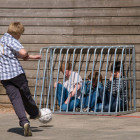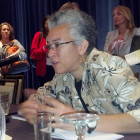
Police Put Young Informants in Grave Danger: Q&A with Author Sarah Stillman
|
Below is a real time, Google Chat interview that Leonard Witt conducted with Sarah Stillman, who recently wrote an article for the New Yorker entitled: The Throwaways; the subhead sums up the story well: “Police enlist young offenders as confidential informants. But the work is high-risk, largely unregulated, and sometimes fatal.” So let’s get started. Leonard Witt: Hi Sarah, first thanks for agreeing to do this interview, you have written a great, heart breaking story, centered around these two sentences from your story: “Every day, offenders are sent out to perform high-risk police operations with few legal protections. Some are juveniles, occasionally as young as fourteen or fifteen.” So my first question is why does it happen? Sarah Stillman: Well, on the one hand, this system has been around for quite some time -- for more than a century, the police have recognized that using "insiders" to gather information on hard-to-penetrate criminal networks can be tremendously useful to them.







